Setting Up Enforcement Actions
How to create and monitor custom actions that follow your triggers in Moderation Dashboard.
Moderation Dashboard is an add-on designed to complement our existing APIs, such as Visual Moderation, by providing a powerful UI for reviewing flagged content, managing high-stakes workflows, and defining custom automation rules.If you haven’t already upgraded to this feature, contact our team to request access and enhance your moderation capabilities.
The Actions tab on the Dashboard allows you to create custom user and post actions that can either be triggered manually by a moderator, or automatically through matching rules you’ve defined. This is where you define any enforcement actions that you’d want to take to moderate your platform, such as removing a post, tagging a post, suspending a user for a period of time, or banning a user. Actions serve as the communication pipeline between the Dashboard and your application server.
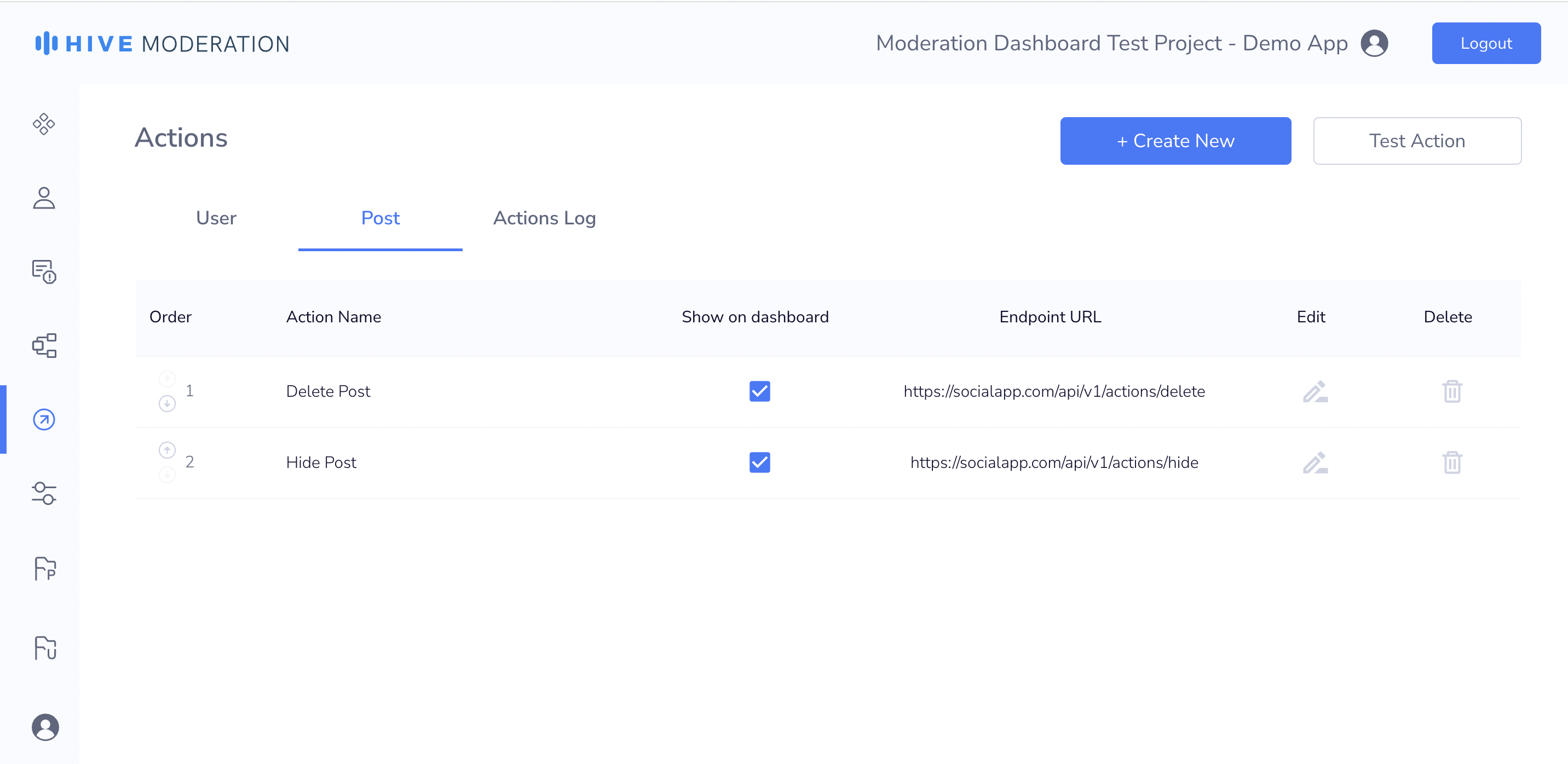
Migration to POST RequestsPlease note, we will only support POST requests to your Actions server starting September 1st, 2022. We will work with you to transition over to using POST requests before that time. You can switch to receiving POST requests to your Actions server instead of GET requests when creating/editing actions. If you choose to receive POST requests, the Dashboard will send the post/user data in the Body of the request instead of the Query Parameters.
Create & Test Actions
Actions may trigger multiple timesPlease note, your actions server should expect multiple action triggers for a given user or post due to:
- Multiple rule triggers for a user or post
- Failed Action Retry
The actions you create tell the Dashboard how to communicate with your platform when content triggers moderation rules. When defining an action, you must specify a callback URL (e.g. a webhook) that, when hit, implements that action in your application. When the action is triggered, the dashboard will ping your callback server with the required metadata so that you can successfully execute the action on the correct user or post within your platform.
You can customize the POST request we send to your server when creating an action:
- Endpoint URL (Callback, Required): This is the URL we will ping when an action is triggered on the Dashboard. Note: each action must have a different callback url to differentiate between actions
- Auth Header/Value: You can specify an Authorization header and token value (if your server requires one) so the Dashboard can communicate with the server
- Query Params: The Dashboard will send all user and post meta data in the query parameters of the request. You can customize the key name to match your naming convention.
HTTP Status ResponseThe Dashboard expects an HTTP 200 OK success status response code to verify that the action has been taken. Any other response code will be treated as a failed action and will show up in the Actions Log (see below).
For failed actions, we recommend that response.data/body is an object. When creating an action, you should use the Test Action feature to ensure that your action is pinging the proper endpoint with correct metadata.
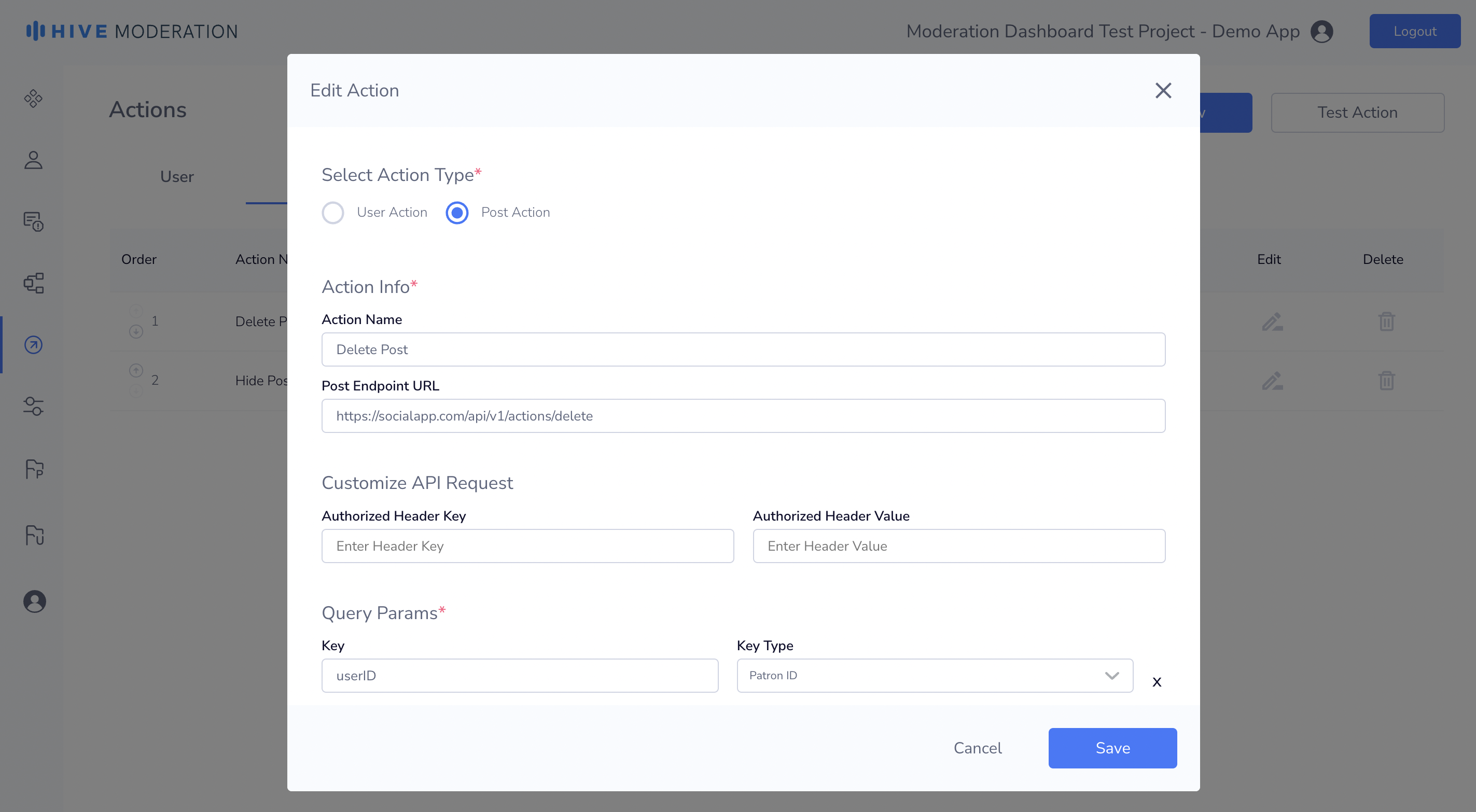
Create Action pop-up
Native Actions
Native Actions are built-in moderation actions that allow moderators to quickly handle common review scenarios without additional setup.
Available Native Actions:
- Flag User for Review: Marks a user for moderator review.
- Flag Post for Review: Marks a specific post for moderator review.
- Remove Related Posts from Review Feed: Removes all posts in the same group or conversation from the review feed. Useful for high-impact actions like banning users or deleting entire conversations, preventing duplicate moderation efforts in the review feed. These actions can be applied in Rules or taken manually in the Review Feeds. Moderation Logs will be created for all related items that are removed from the Review Feed.
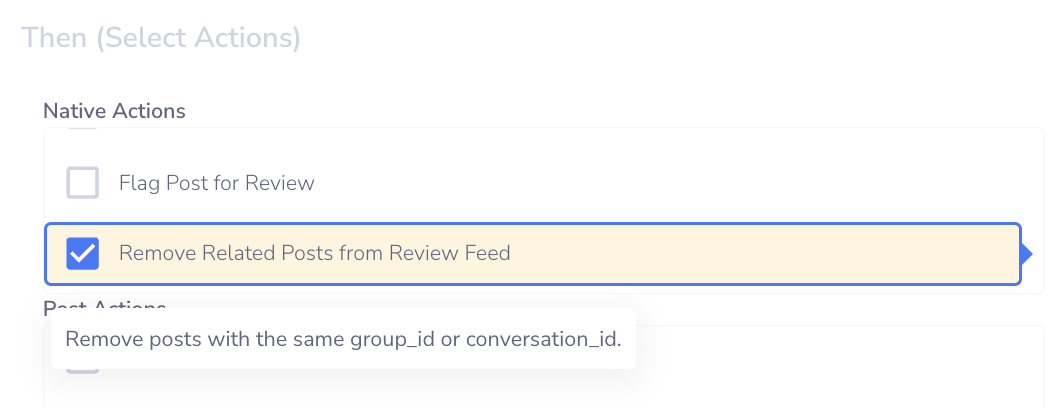
- Flag Group for Review: Marks an entire group of posts for moderator review. Moderators can review and action the entire group at once, and the Moderation Logs will reflect one entry for the entire group, even if multiple posts within the group are flagged individually. This is especially useful for collections of related posts, such as advertisements or social media content, which are typically reviewed and moderated together.
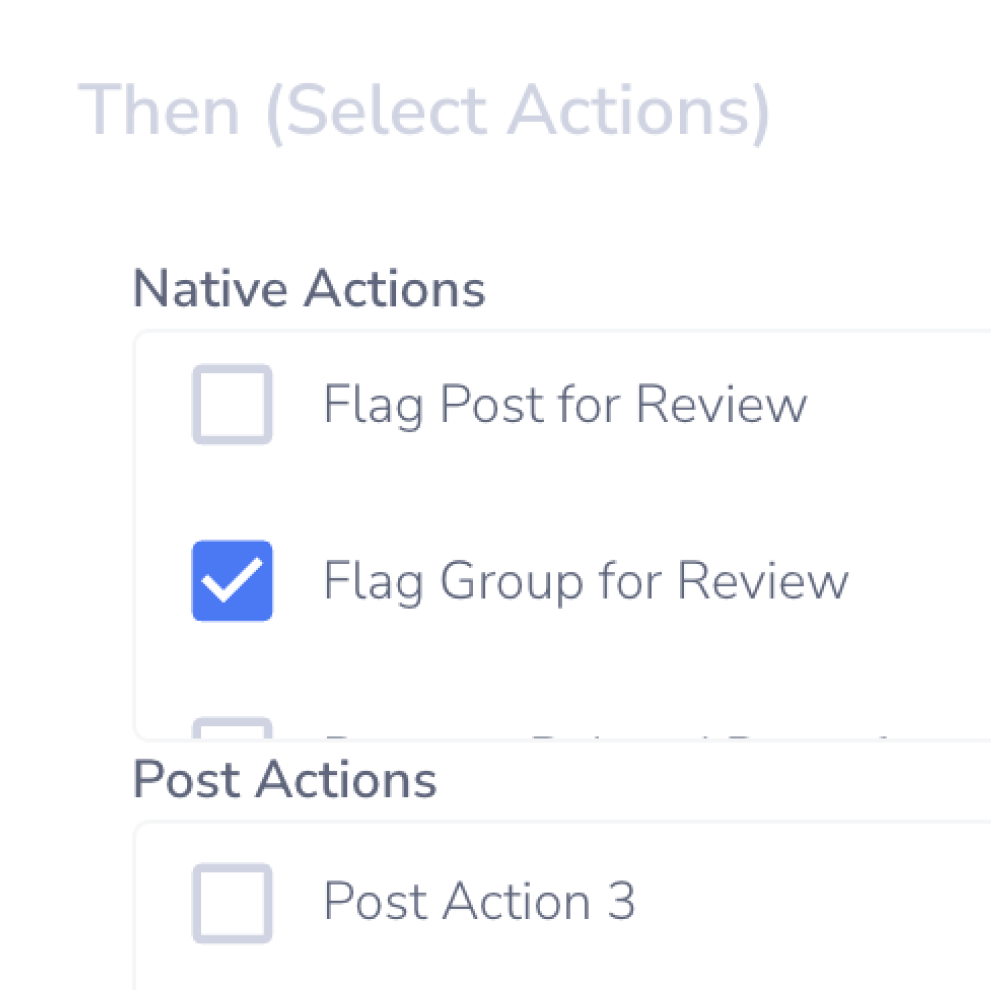
Moderation Log
The Moderation Log shows all user and post actions triggered by the Dashboard. Both successful (200 OK) and failed actions will show up here.
If an action fails, a red dot will appear beside the Moderation Log header to notify you. Once acknowledged, you can mark all failed actions as read. Once you clear all failed actions, the red notification will reset.
The Moderation Log also displays:
- Automatic Rule Triggers
- Tasks flagged for Review
- Reported Tasks
- Escalated Tasks
- Reviewed Tasks from the feed
- Tasks that expired from the feed
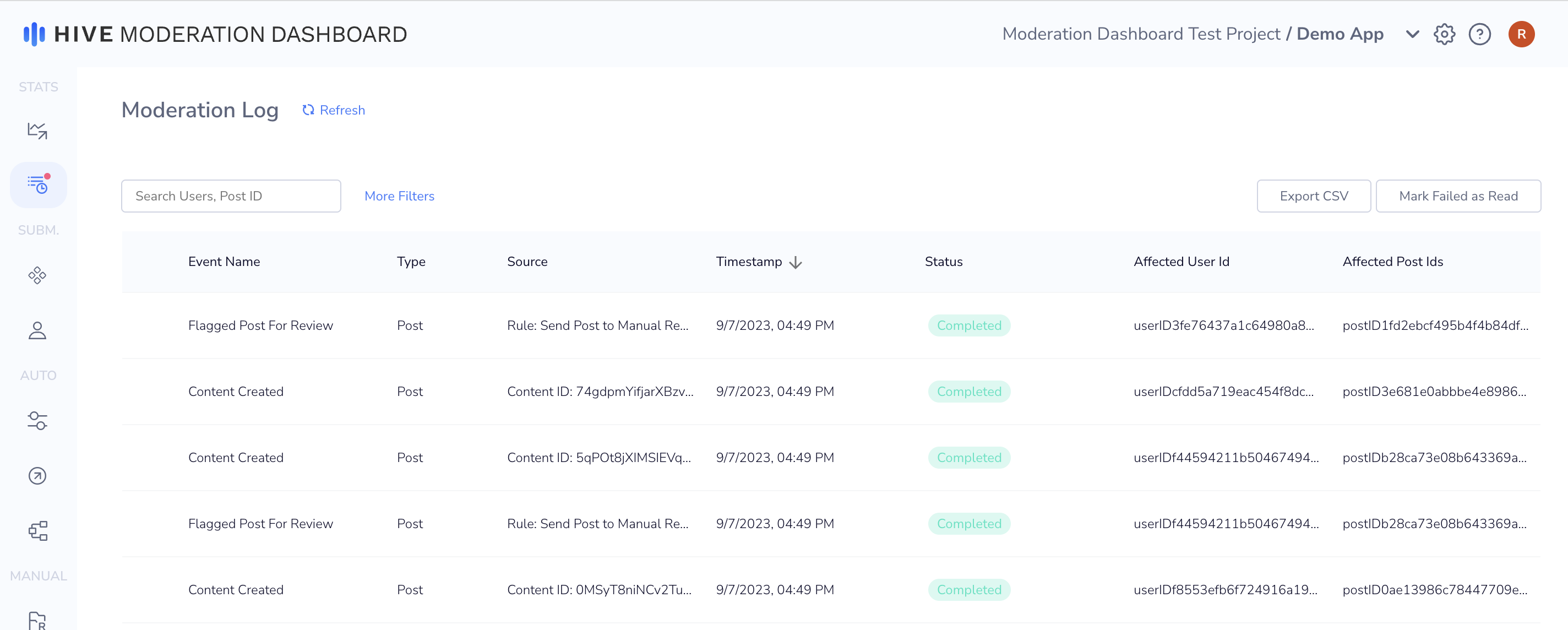
Actions Log
Updated 26 days ago
